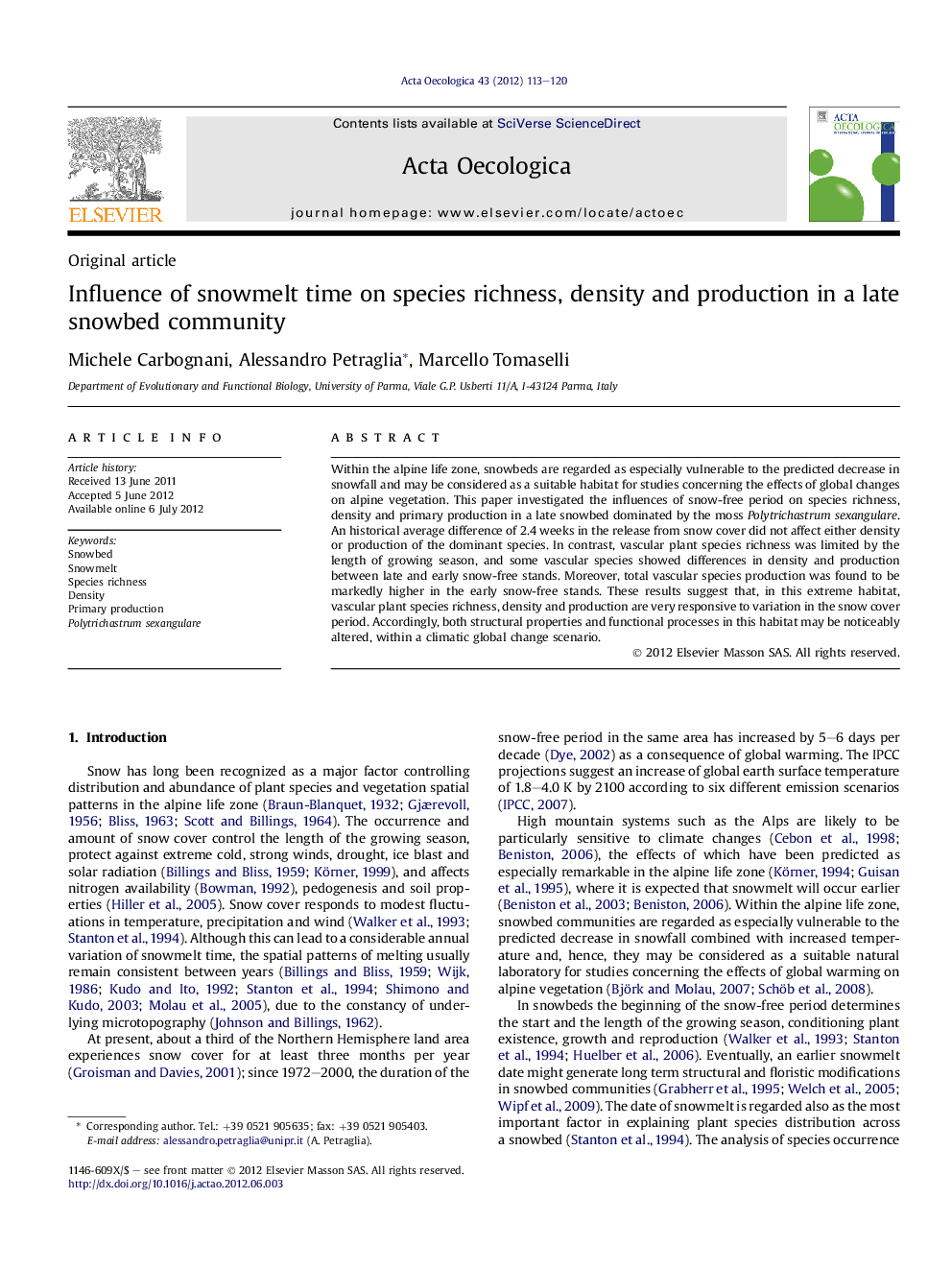| Article ID | Journal | Published Year | Pages | File Type |
|---|---|---|---|---|
| 4380867 | Acta Oecologica | 2012 | 8 Pages |
Within the alpine life zone, snowbeds are regarded as especially vulnerable to the predicted decrease in snowfall and may be considered as a suitable habitat for studies concerning the effects of global changes on alpine vegetation. This paper investigated the influences of snow-free period on species richness, density and primary production in a late snowbed dominated by the moss Polytrichastrum sexangulare. An historical average difference of 2.4 weeks in the release from snow cover did not affect either density or production of the dominant species. In contrast, vascular plant species richness was limited by the length of growing season, and some vascular species showed differences in density and production between late and early snow-free stands. Moreover, total vascular species production was found to be markedly higher in the early snow-free stands. These results suggest that, in this extreme habitat, vascular plant species richness, density and production are very responsive to variation in the snow cover period. Accordingly, both structural properties and functional processes in this habitat may be noticeably altered, within a climatic global change scenario.
► We analysed the effects of snow-free period in a late snowbed community. ► The dominant moss wasn't affected by an advanced snowmelt. ► The growing season length influenced vascular species richness and growth. ► Community structure and function are sensitive to change of snowmelt schedule.
